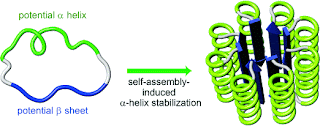Review of
Can cows walk down stairs? By Paul Heiney (ed.) Sutton Paperback 2006
and Do cats have bellybuttons? By Paul Heiney (ed.) Paperback 2008
These two books came out of a remarkable institution that lived only for a few years. London-based ScienceLine (not related to the current project scienceline.org) offered scientific answers to any question that ordinary citizens chose to fire at it via phone or email. After a few years and 16,000 questions answered by 8 gurus (teachers? scientists?), government funding for the project ceased and it closed down in September 2003.
These two books are its legacy – two colourful bouquets of vaguely science-related questions plucked from the ScienceLine archives and arranged by non-science author Paul Heiney.
I came across them because the youngest member of my family picked the first of these books and enjoyed it. With the style of the questions very much along the lines of children’s questions (we are told nothing about the age or demographic profile of the people who asked them! They may be mostly children, for all I know.), the short(ish) answers and the funny cartoons, it’s no wonder the books appeal to children, and probably also to grown-ups whose scientific education got stuck at that level.
For the scientist, they are a mixed blessing. Reading most of the questions but only a selection of the answers, I found equal measures of interesting and trivial stuff on both sides. Some of the answers contained silly errors that should have been eliminated at proof reading, e.g. mix-ups of the effect of convex mirrors (in book 2, the answer suggests wrongly that it makes things appear closer). Some answers didn’t match the question (one question was about the limits of the galaxy, and the answer was about the limits of the universe), and some left me unsatisfied, including the answer to the title question regarding cows and stairs. Now I know that they can walk upstairs but not downstairs and that it has something to do with their knees, but I still don’t understand why they can’t walk down. I’m sure cows in the Swiss Alps can walk down the mountainside!
The questions are a reminder of how difficult it is to ask a good scientific question. If these are the 500 best ones, I feel for the people who had to answer the 15,500 questions that were not selected.
Still, the kind of dialogue established by ScienceLine is a good idea in principle and it’s a shame it was discontinued. If I were to establish something like this, I would probably avoid promising to answer every question. If, say, only the 5 best questions get answered every day, and one of them is syndicated out to be printed in a few newspapers for a fee, maybe ScienceLine could even be commercially viable without that government grant that proved so short-lived. At least the number of questions sent in and the popularity of the books suggests that there is a demand for this kind of dialogue.
PS: A nitpicker’s guide to some of the other errors:
Asked whether one is more likely to win the lottery twice in a row or twice in a lifetime, the gurus say “it would be easier if” and go on to answer a completely different question. In fact the question is very straightforward, as the outcomes representing two wins in a row are a subset of those for two in a lifetime. Thus, anybody playing the same lottery more than twice in their lifetime is more likely to achieve the latter result than the former.
Asked how many prime numbers exist, the gurus give the right answer (infinitely many) and proceed with a wrong explanation, saying it must be infinite because the whole numbers are infinite as well. In fact, there is a very simple proof that would have enlightened the readership:
Imagine the opposite were true, and there were only a certain number of primes. Write them all down, multiply all, and add 1. Call the result P. Try dividing P by all known primes. It is not divisible by 2, as there will be a residue of 1. Same situation for 3, 5, 7, and all primes on our original list. Hence P is a prime that was not on our original list, proving our initial assumption wrong.


